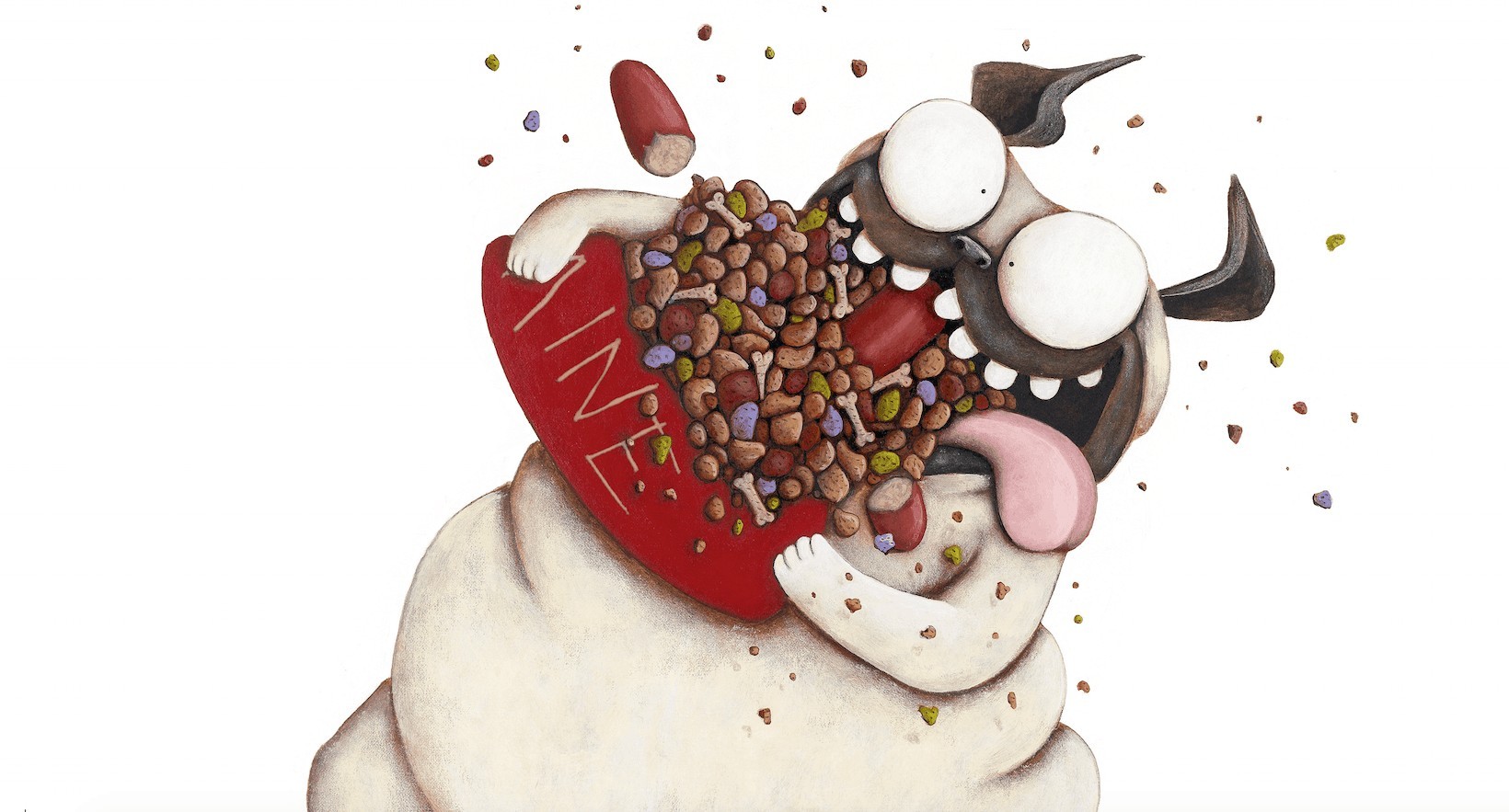Pig The Winner, written and illustrated by Aaron Blabey, is another picture book in the widely-loved Pig The Pug series. I suspect these will become Australian classics in the same way the Hairy Maclary books became New Zealand classics.
I pick and choose when it comes to Aaron Blabey books. Pig The Fibber, which felt rushed out after the success of Pig the Pug, seemed a voracious grab for publishing dollars. Pig The Star, which I flipped through in the shop, contains a running gag similar to the first Bad Guys book, in which a male character dresses in feminine accoutrements for laughs, but with serious ideological issues bubbling under the surface. I’ve written about this issue elsewhere.
Some might argue that Pig in Pig The Star has been guised specifically as Marilyn Monroe rather than as a generic woman. I don’t buy this as defence for several reasons: The target age group won’t get the reference to Monroe, and being ‘an attention whore’ (I’m using that term deliberately) is not in reality a specifically feminine shortcoming even though the dominant culture codes it as such. And when we code attention-seeking behaviours as specifically feminine, this narrative turns back on women when women attempt to step up into their fair share of limelight. Most sinister of all, women are regularly accused of making up stories for attention after reporting genuine crimes.
However, Pig The Winner is an excellent example of a funny, engaging picture book, probably because it contains no femininity to speak of.
ILLUSTRATIONS IN PIG THE WINNER
There’s a great trick used when illustrating stories about characters who chuck tantrums. Here it’s evident from the cover — Pig the Pug has scribbled over the ‘real’ text and replaced it with his own version of truth. This same technique was used to great effect in Z is for Moose.
What is it about pugs? They are inherently funny to look at. Sausage dogs, ditto. Blabey has picked two of the funniest dog breeds for this series.
There’s a lot of white space in these books, which means only the Chekhov’s guns make it onto the page. For instance, pay attention to when the rubbish bin is introduced. At first I wondered what the bin is doing there. Perhaps it is only meant to illustrate that Pig eats a whole lot of stinking rubbish? But turn the page and you’ll realise the plot reason: The bin is a vital part of the Battle sequence.
STORY STRUCTURE OF PIG THE WINNER
SHORTCOMING
Pig’s shortcoming is spelt out clearly on the opening spread. Each book in the series is an exhibit of another of Pig’s terrible qualities, which are a bottomless pit, it seems.
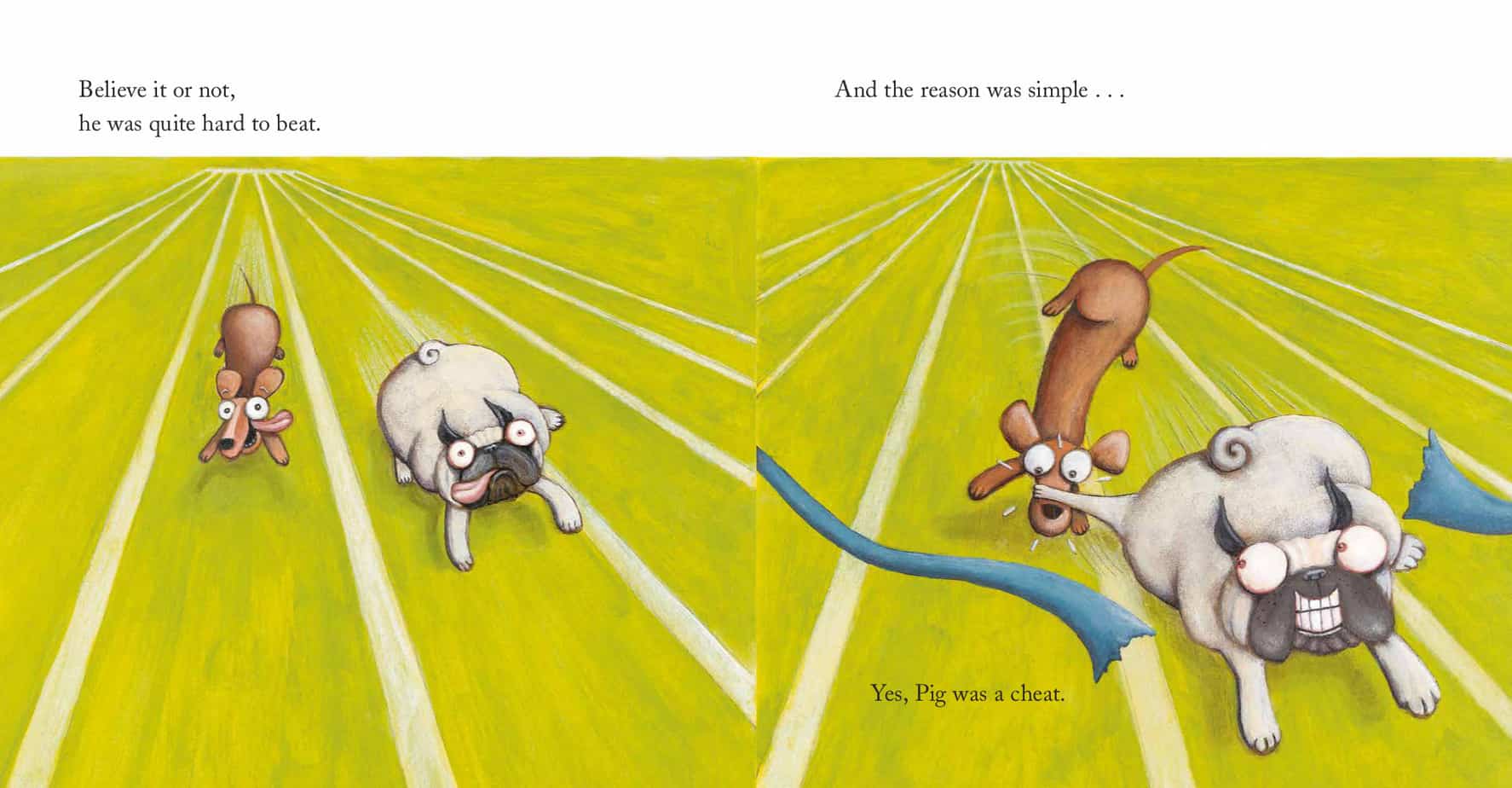
DESIRE
Pig wants to win everything. This points to a deeper desire — we assume he wants to be admired and to wield power. Pig is the archetypal baddie, but he is a fun baddie, so we love his mischief.
OPPONENT
Trevor is Pig’s longtime opponent. Trevor sometimes wins things, which stands in direct opposition to Pig’s wish to win all the things.
PLAN
Blabey explains Pig’s modus operandi, which is a stand-in for a plan: He ‘throws a pink fit’ whenever he doesn’t win.
Apparently this is a British phrase but also used widely in Australia. Apparently you can also have a ‘blue fit’ and it means the same thing.
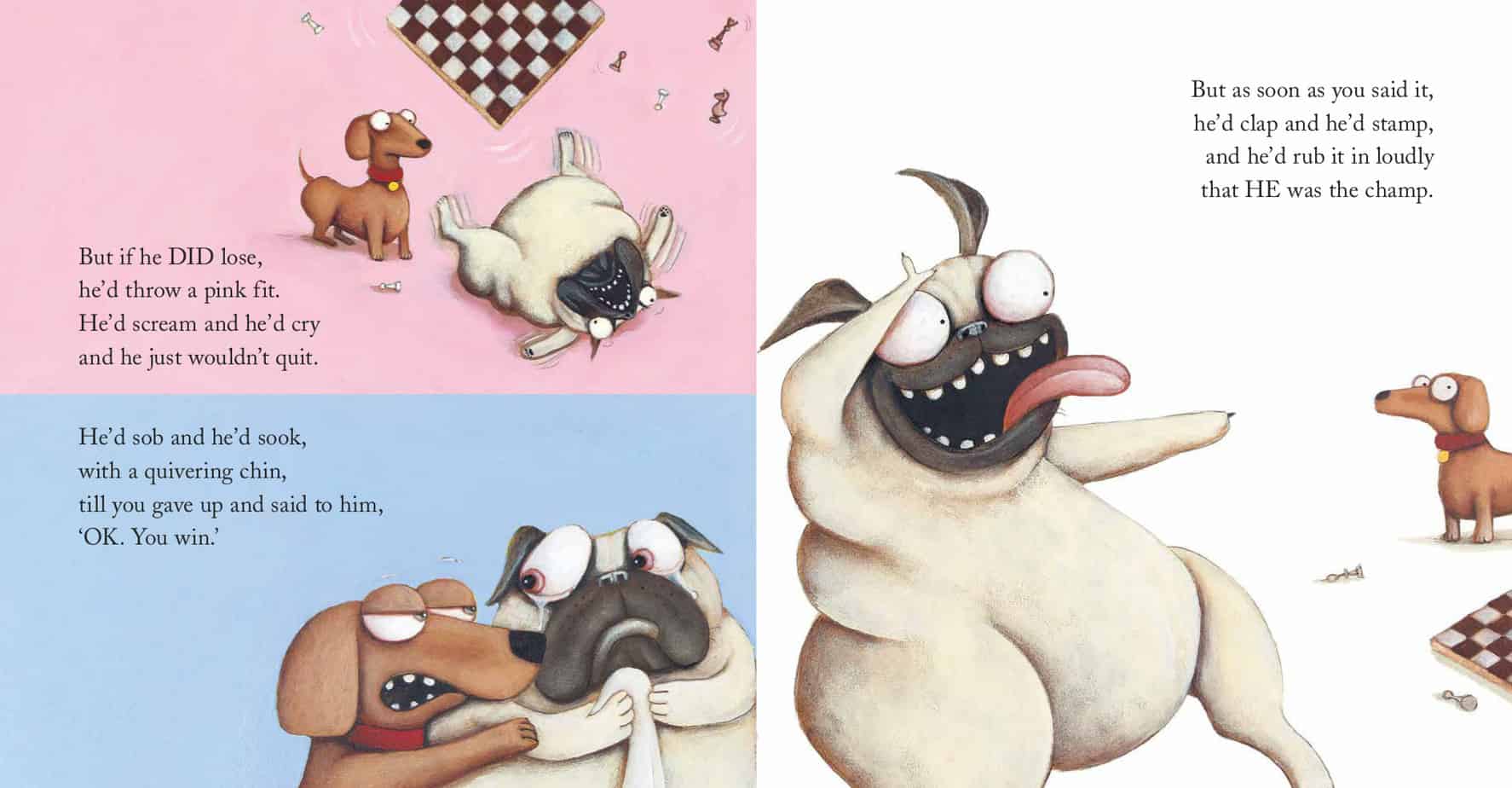
BIG STRUGGLE
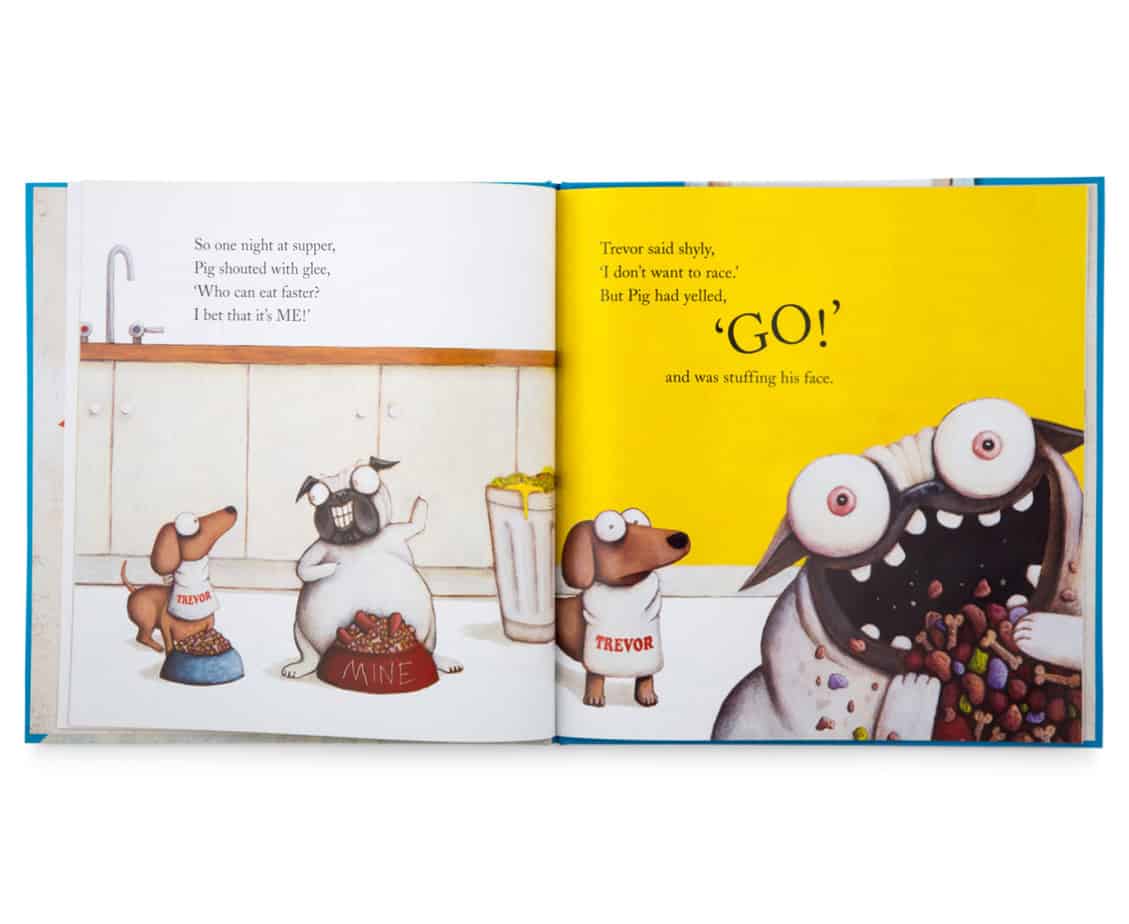
In the lead up to the Battle, the reader is asked to predict the story. Young readers who have read previous Pig the Pug books may even get it right.
But something went wrong.
Do you know?
Can you guess?
Pig’s shortcoming is so bad that the shortcoming is in itself enough to bring him down. In this particular story, Pig is so greedy that he gets his bowl stuck in his mouth and needs help from Trevor to get it out.
Trevor performs something like the Heimlich manoeuvre, which we’re now told not to do, apparently:
[T]he risks of the HM appear to outweigh the benefit- especially when there is a more effective way of dislodging the object with less risk of causing harm in the process. Reported injuries sustained as a direct result of the HM include gastric rupture, lacerated liver, fractured Xiphoid process/sternum, aspiration of stomach contents and other serious complications.
Accredited First Aid, Australia
The reader is highly encouraged to enjoy whatever mischief befalls Pig. We are treated to a number of close up shots of his face: stuffing it with (beautifully rendered) kibble, stuffing it some more, then the bowl:
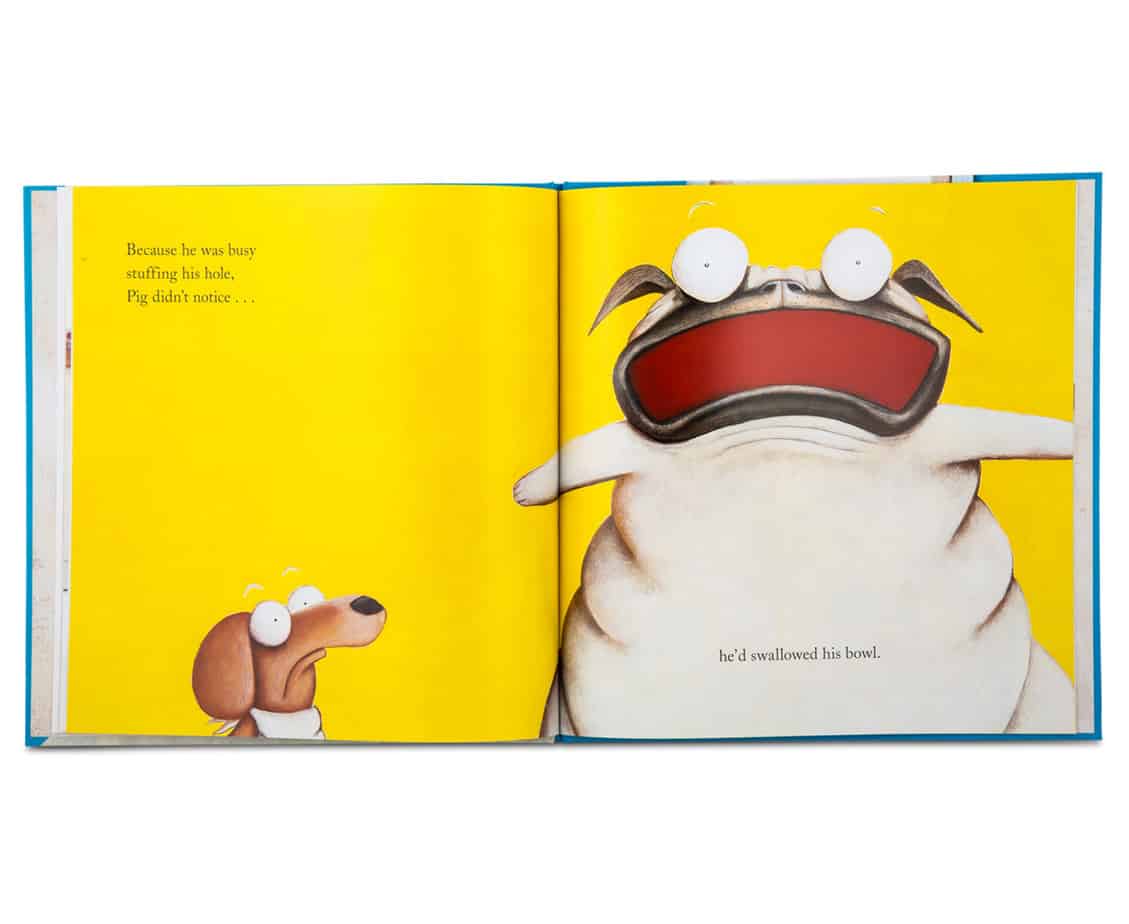
It is funny when he gets the bowl stuck in Pig’s mouth; it would not be funny if he had the bowl stuck in his throat. (One is uncomfortable; the other would kill him dead.)
Blabey knows to take this revenge arc to its extreme end. It’s not enough for Pig to simply get the bowl stuck in his mouth for a few seconds: This despicably comic character deserves despicably comic punishment. For readers in need of mimesis, this may not work:
I’m confused. After the Pig falls in the bin, “These days it’s different . . .” Choking didn’t phase him, but falling in a trash can gave him a change of heart? Did he suffer memory loss from the fall and suddenly “plays to have fun.” Yet, at the end, he is still a cheater. This is one horrible dog.
— a reviewer on Goodreads
Ok, now according to the story, that one action— the bin, not the choking, has now caused Pig to relax and have fun and not have to always be the winner. If that’s not crazy enough, the last page shows Pig the pug cheating.
— from another reviewer on Goodreads
In comedy, an unlikely incident leading to Anagnorisis is a fairly common trope. It is used in Office Space, for instance, which is far more realism than the Pig the Pug books. In this case, Peter goes to see a hypnotist, but while he is under the hypnotist’s control, the hypnotist keels over and dies, which means Peter permanently doesn’t give a crap about anything anymore.
This is honestly where I may have come unstuck if I was trying to write this book, or something like it. If you’re writing a revenge plot with slapstick gags, take every opportunity afforded to you. Here, the bowl bounces into the rubbish bin and hits Pig. He gets hurt a little bit (indicated by the bandage on his head), which leads him to think twice…
ANAGNORISIS
Since this is now an established series, the ‘Anagnorisis’ in this book is different from the genuine lesson learned in the first: Here, Pig ostensibly learns not to be greedy and not to cheat. However, the final illustration shows the reader that he is secretly cheating at a card game against Trevor.
If Pig has had any revelation at all, he has learned that he should be a more sneaky kind of cheat.
TV Tropes has a name for this. It’s called The Ignored Epiphany:
The Ignored Epiphany is a moment where the Villain or morally gray character has a moment of clarity or revelation about themselves and their actions, seeing it in perspective for perhaps the first time and realizing exactly how useless and off base their various self-delusions and justifications were. It’s often a low moment for these characters, and may provoke sympathy from the audience. The character may acknowledge it various ways, with a sigh, a bitter laugh, muttering “What Have I Become?” or possibly saying to someone or themselves “I’ve really messed this one up”.
Then… there’s nothing. No Heel–Face Turn, no last minute redemption or even an attempt to undo the harm they’ve wrought. Nor is there any mental trauma equivalent to a Villainous BSoD or mental breakdown. There’s just… nothing.
NEW SITUATION
We extrapolate: Pig will continue to cheat but he’s a bit more subtle about it now. (Not really true for comedy series — Pig will start the next book just as greedy and self-centred as he began this one.)
Well, that’s my interpretation, anyway. But some readers believe Pig really has learned a lesson:
Aaron Blabey’s books bring a smile to this librarian’s face as well as to the faces of my teachers and students. Pig the pug is learning another lesson in this one and along the way will hopefully teach young readers/listeners to be good winners as well as gracious losers.
consumer review on Goodreads
